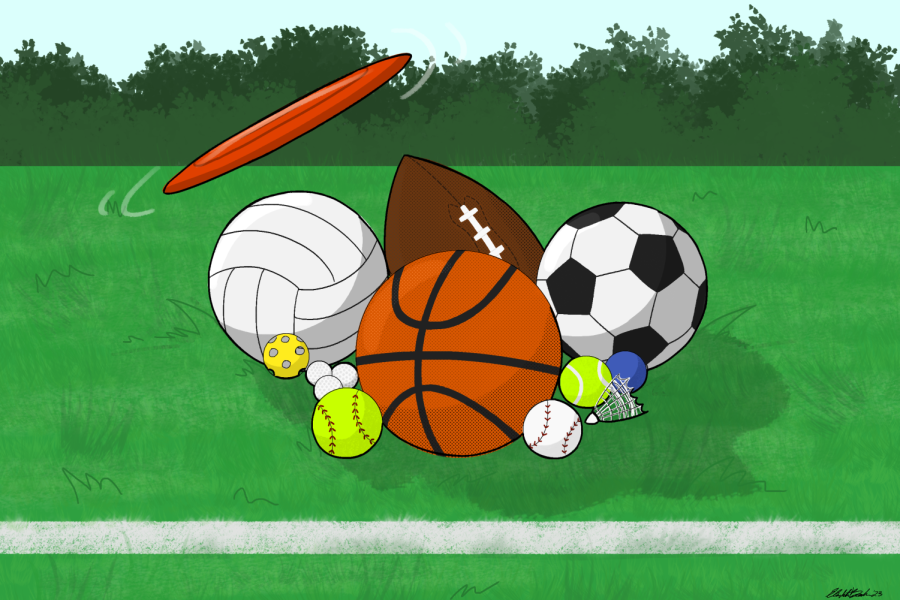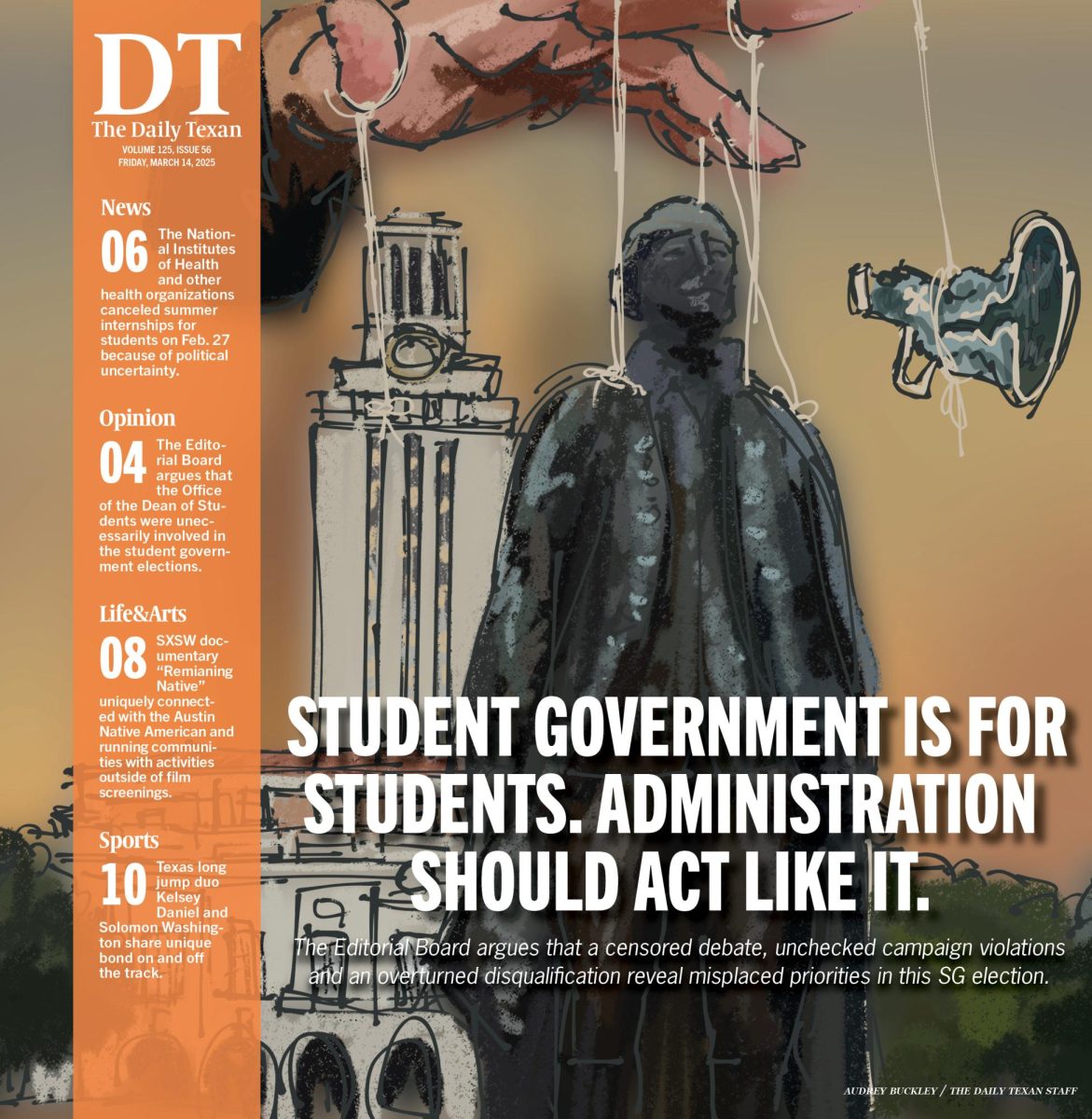Facilitating competitive intramural play during spring semester
April 17, 2023
UT undeniably loves sports. Some students show out at football or volleyball games while others participate in club sports such as Quidditch or field hockey. For many students, they manifest this love of sports by playing in one of UT’s Intramural leagues.
One of the stated missions of UT Intramural Sports is to provide students an outlet to play sports recreationally and competitively. In line with this directive is the structure of most IM sports, which divides teams into two leagues: A and B. The A league is meant to serve as the competitive component of intramurals while the B league’s purpose is maximizing inclusivity. Participants compete in these leagues across three different divisions: mens, womens and coed.
During spring semesters, RecSports decreases the number of games played across its intramural sports. As a result, students are barred from playing on both a gendered and coed team. Despite the merits of this rule, UT RecSports should reconfigure it to better align with the spirit of the different leagues. Lifting this restriction for A league would increase competition, while maintaining it for B league would still allow for a higher number of players to compete.
Owned by UT, the Berry M. Whitaker Sports Complex hosts the majority of IM sports. The complex is vast — but space is still limited. With many entities vying to use space at Whitaker, RecSports is limited in the number of games they can put on for intramurals each semester.
Although this happens during both semesters, spring is an especially busy time at Whitaker.
Traditionally, RecSports has hosted fewer IM games during this time in order to be cooperative with other UT clubs.
Joseph Wise, senior assistant director for Intramural Sports, confirmed that this practice would continue in future spring semesters, especially given UT’s recent shortening of the academic term.
“With classes ending on the 24th now, we have to kind of squish everything together to make sure that we finish (IM play by that date),” Wise said. “We don’t always have the space necessary (for more games) because a lot of our club (teams) are in season.”
The rule capping how many teams participants can play on was designed to allow more students to join intramural teams during spring seasons where the number of games — and therefore the number of teams — are limited.
However, these regulations interfere with the competitiveness of play. This leads to frustrating outcomes for players, such as advertising graduate student Calista Cordero.
“All those people who chose to play for one team left the other team hanging,” Cordero said. “It’s hard to go back in and try to find more free agents to play (once you lose players). I felt like I was kind of abandoning my women’s team (when I decided to play coed).”
When individuals are forced to choose between coed and gendered play, teams become splintered. Losing players in such a manner decreases the overall quality of squads across all divisions.
Team restrictions may increase accessibility, but it comes at the cost of quality of play.
For future semesters, players could designate themselves as either A league or B league players on a sport by sport basis. A league participants could register for one gendered and one coed team, creating a more restrictive but competitive league. B league participants could be constrained to registering for only one team, allowing maximum participation of casual fans.
Competition plays a huge role in the fantasy of sport. On a campus where we take sports so seriously, RecSports should facilitate competitive play for those students who wish to contend at intramurals’ highest level in upcoming spring semesters.
Ransom is a psychology junior from San Antonio, Texas.
















